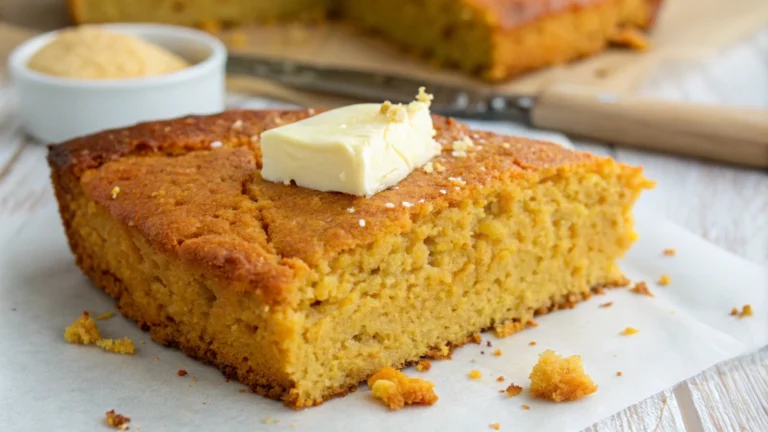Bundt Cake Recipes: How to Create Perfect Rings Every Time
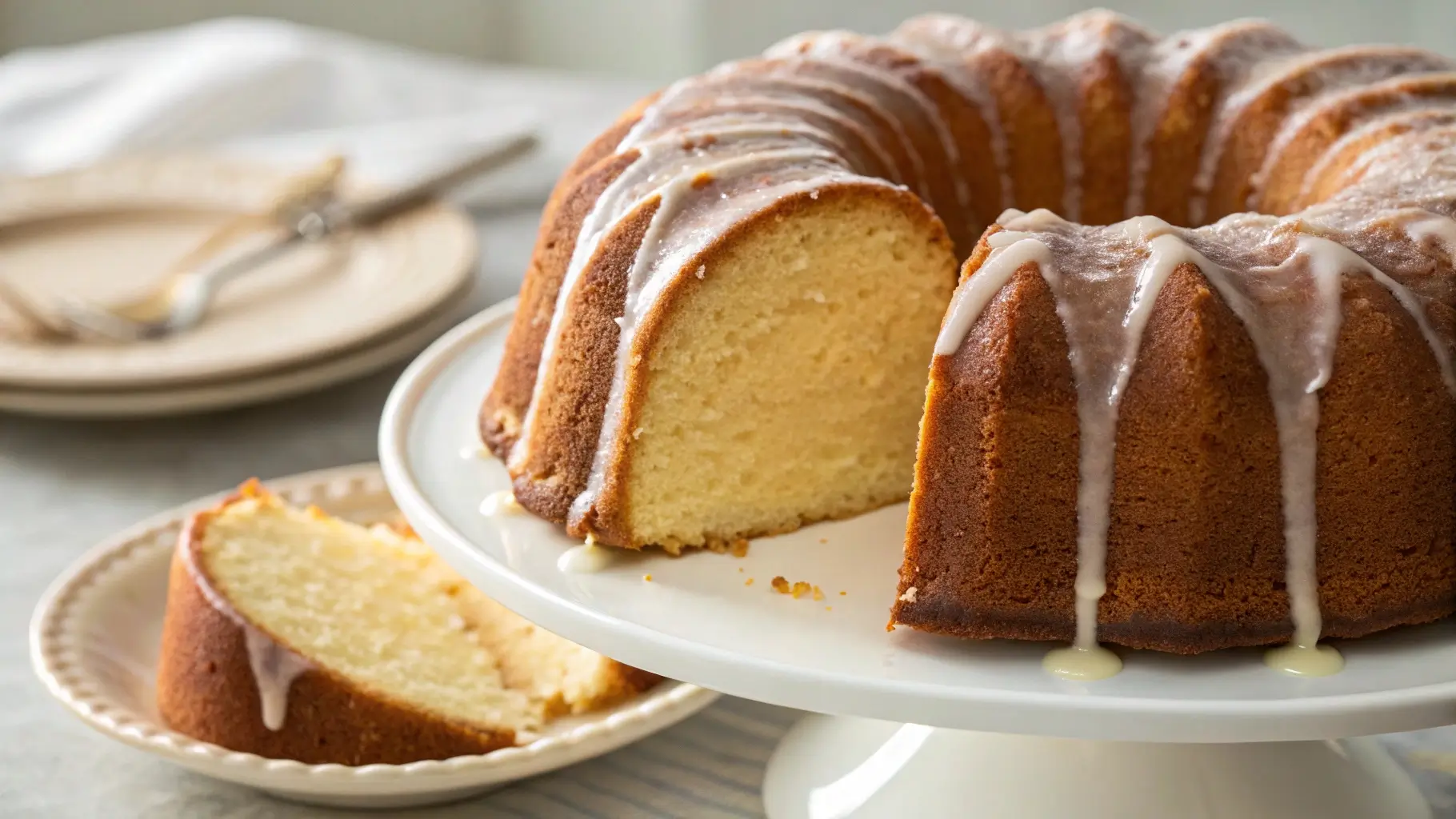
Have you ever spent hours baking a beautiful bundt cake, only to have it stick to the pan and come out in pieces? Or maybe your bundt cakes taste great but never have that perfect, defined ring shape that makes bundt cakes so special? You’re not alone!
Many home bakers struggle with bundt cakes, but with a few simple techniques and reliable bundt cake recipes, you can create stunning, picture-perfect rings every single time. Today, I’m sharing all my bundt cake secrets that I’ve learned over years of trials (and many, many errors).
Table of Contents
Why This Guide Will Help You Master Bundt Cake Recipes
Making a perfect bundt cake isn’t just about having a good recipe—it’s about mastering techniques that ensure your cake releases perfectly and maintains those beautiful ridges and curves that make bundt cakes so special.
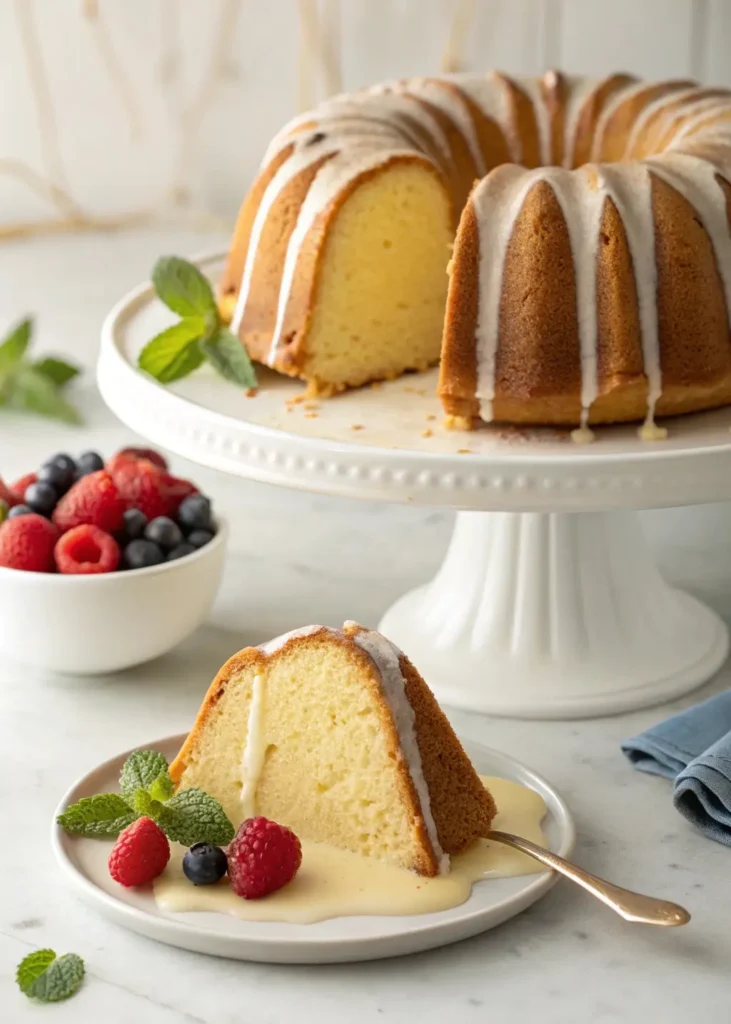
Time Required: Most bundt cake recipes take about 20 minutes to prepare and 45-60 minutes to bake.
Difficulty Level: Moderate. While bundt cakes aren’t complicated, they do require specific techniques to ensure success.
By the end of this post, you’ll have all the knowledge you need to create gorgeous bundt cakes that not only taste amazing but look bakery-worthy too!
The Magic of Bundt Cake Recipes: Essential Ingredients
Let’s talk about what makes bundt cake recipes special. The best bundt cakes have a moist, dense texture that holds up well to the detailed pan shape. Here are the key ingredients that make this possible:
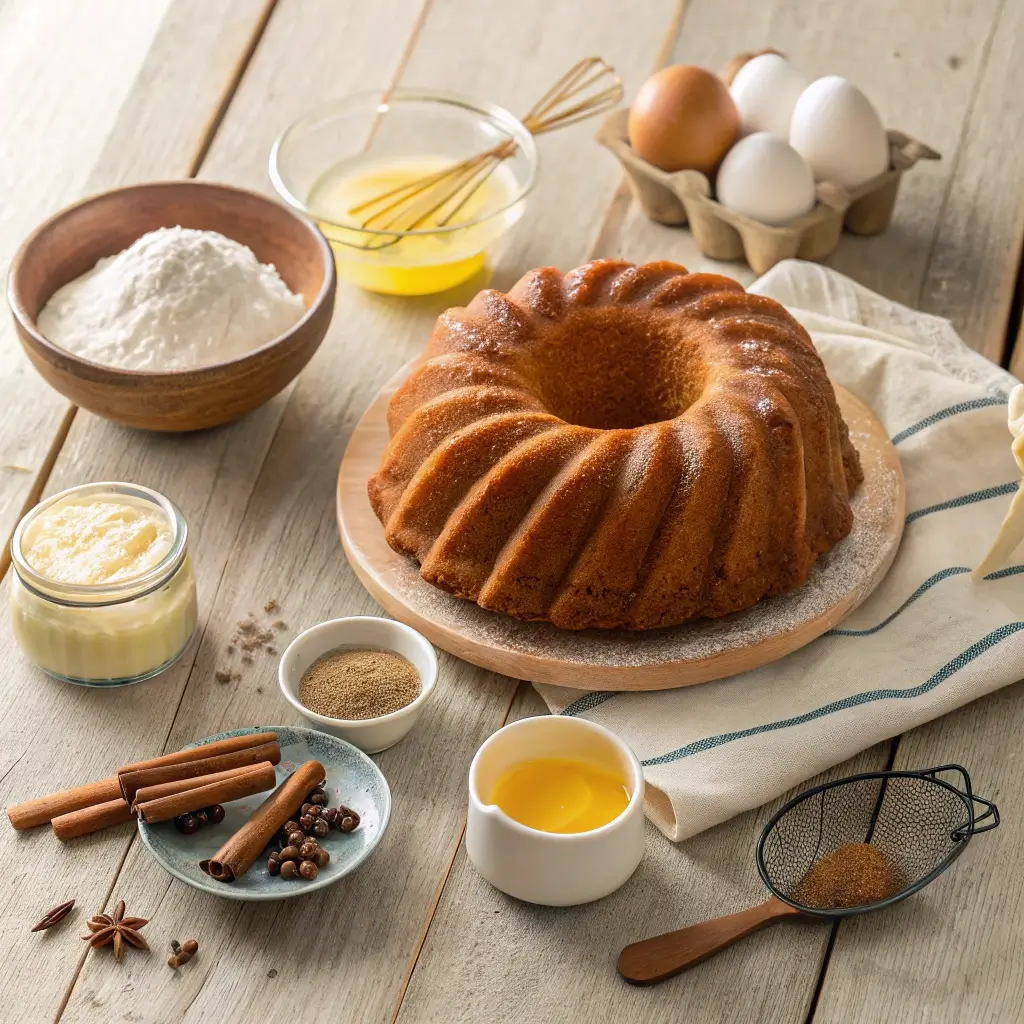
Flour
- All-purpose flour works great for most bundt cake recipes
- Cake flour creates a more tender crumb but may make the cake too delicate
- Always measure flour correctly by spooning it into your measuring cup and leveling it off
Fat
- Butter adds rich flavor and helps cakes release from the pan
- Oil creates extremely moist cakes that stay fresh longer
- Sour cream or yogurt adds moisture and a slight tanginess that balances sweetness
Eggs
- Provide structure and richness
- Room temperature eggs blend better with other ingredients
- Large eggs are the standard for most bundt cake recipes
Sugar
- Granulated sugar is the go-to for most recipes
- Brown sugar adds moisture and a caramel flavor
- Powdered sugar is often used in glazes
Leavening
- Baking powder and baking soda work together in many recipes
- Fresh leavening agents are crucial—replace them every 6-12 months
Flavorings
- Vanilla extract enhances almost every bundt cake recipe
- Citrus zest brightens flavors
- Spices like cinnamon, nutmeg, and cardamom add warmth
Substitutions and Variations
Don’t have all the ingredients? Here are some swaps that work well in bundt cake recipes:
- Butter → Oil: Use ¾ cup oil for each cup of butter for a moister cake
- Sour Cream → Greek Yogurt: Equal substitution works perfectly
- Buttermilk → Regular Milk + Vinegar: Add 1 tablespoon vinegar or lemon juice to 1 cup milk
- Eggs → Applesauce: ¼ cup applesauce can replace 1 egg (texture will be different)
- All-Purpose Flour → Gluten-Free Flour: Use a 1:1 gluten-free baking blend
Step-by-Step Instructions: The Perfect Bundt Cake Process
Now let’s dive into the process that will ensure perfect bundt cake recipes every time!
Preparing Your Bundt Pan (The Most Important Step!)
- Start with the right pan
- Heavy, quality bundt pans with non-stick coating work best
- Avoid pans with intricate designs for your first few attempts
- Master the greasing technique
- Use a baking spray with flour (like Baker’s Joy) OR
- Apply a thin, even layer of solid shortening with a pastry brush, then dust with flour
- Be thorough! Cover every ridge, crevice, and surface
- Tap out excess flour by turning the pan upside down and tapping it gently
- Time this step right
- Grease the pan right before filling it
- Don’t grease too far ahead or the coating might slide down the sides
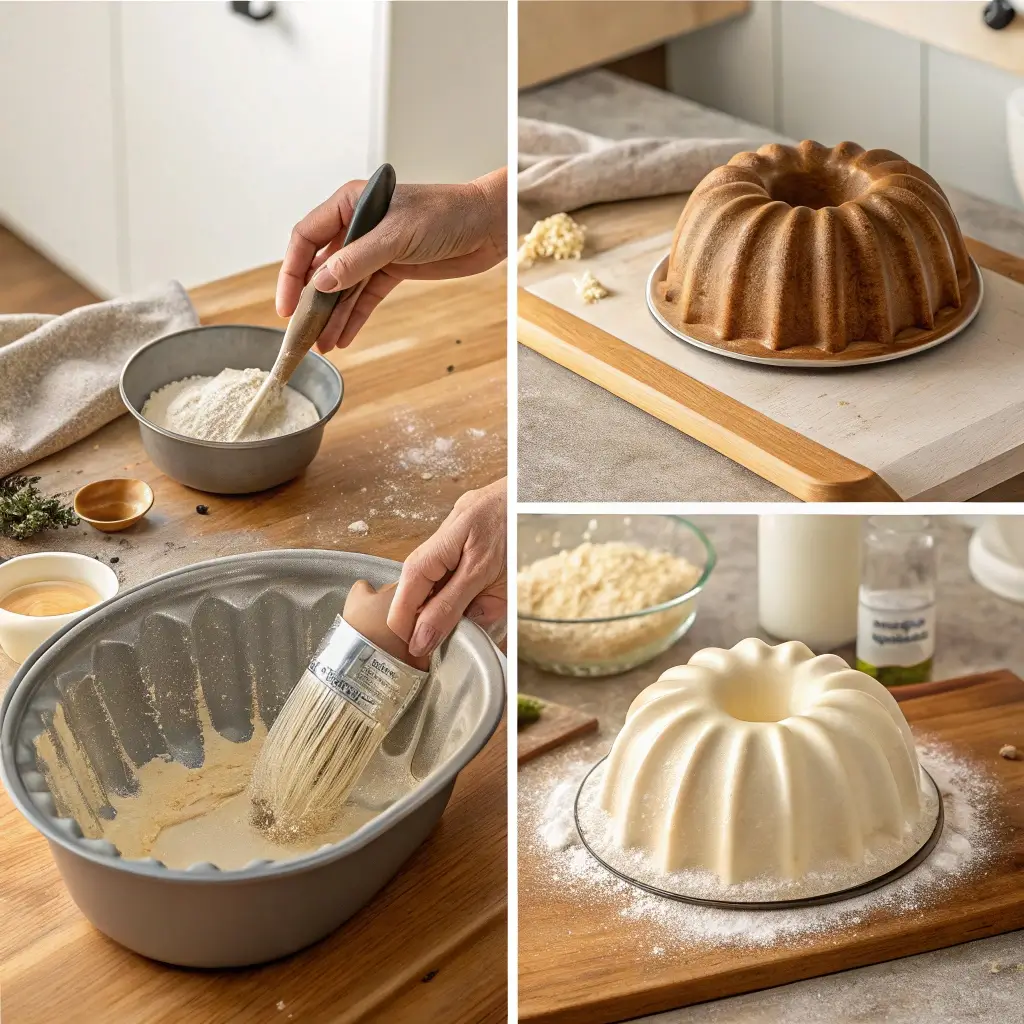
Making Your Bundt Cake Batter
- Prep all ingredients
- Bring cold ingredients (eggs, butter, milk) to room temperature
- Measure everything before you start mixing
- Cream butter and sugar properly
- Beat butter and sugar for 3-5 minutes until truly light and fluffy
- This creates tiny air pockets that help the cake rise
- Add eggs one at a time
- Beat well after each addition
- This prevents the batter from curdling
- Alternate wet and dry ingredients
- Add dry ingredients in three parts
- Add wet ingredients in two parts, beginning and ending with dry
- Mix just until combined between each addition
- Don’t overmix the final batter
- Stop mixing as soon as ingredients are incorporated
- Overmixing develops gluten, making cakes tough

Baking Your Bundt Cake
- Fill the pan properly
- Pour batter evenly around the pan
- Fill only about ⅔ to ¾ full
- Tap the pan gently on the counter to remove air bubbles
- Bake at the right temperature
- Most bundt cake recipes bake at 350°F (175°C)
- Place the pan in the center of the oven
- Avoid opening the oven door for the first 30 minutes
- Test for doneness correctly
- Insert a wooden skewer or toothpick into the thickest part
- It should come out clean or with a few moist crumbs
- The cake should also pull away slightly from the sides of the pan
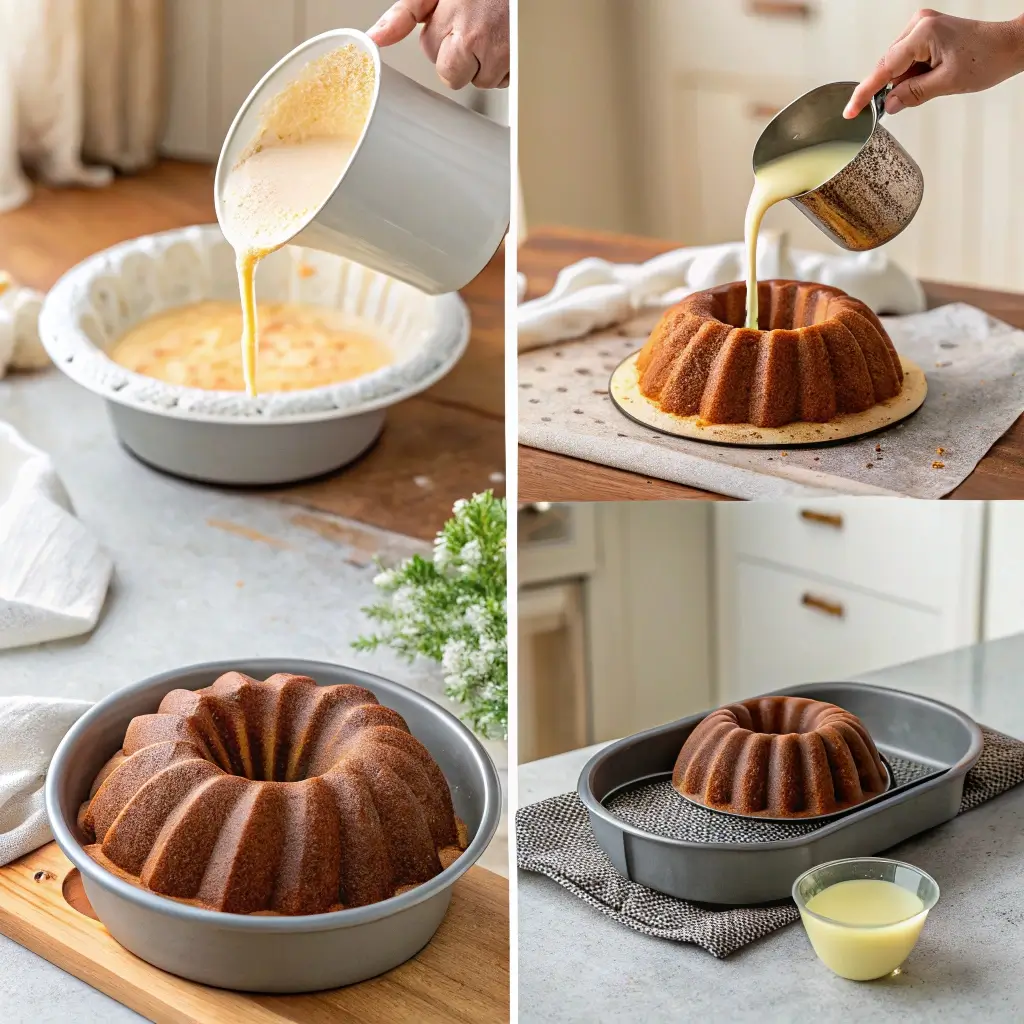
The Critical Cooling and Removal Process
- Cool in the pan – but not completely
- Let the cake cool in the pan for exactly 10-15 minutes
- This is the perfect window – too short and the cake will break, too long and it will stick
- The removal technique
- Place a cooling rack on top of the bundt pan
- Holding both together, flip them over in one smooth motion
- Wait a minute before lifting the pan off
- If it doesn’t release immediately, tap the pan gently or run a plastic knife around the edges
- If the cake sticks
- Place the pan back in a warm oven (170°F/75°C) for 5 minutes to warm the fats in the cake
- Try the release process again
- In extreme cases, place the pan in hot water for 30 seconds (outside only, don’t get water on the cake)
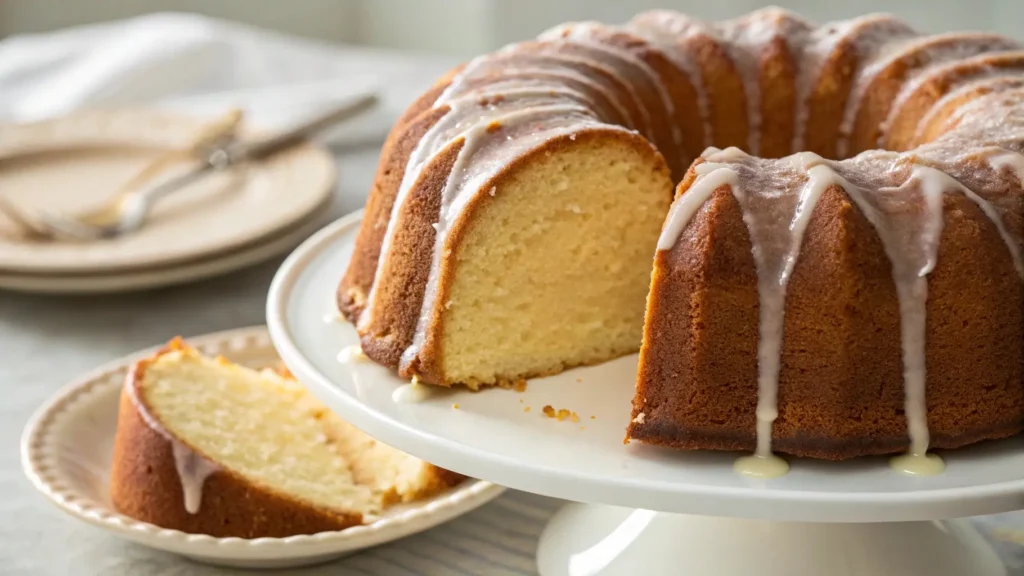
Assembly: Finishing Your Perfect Bundt Cake
Now that you’ve successfully baked and released your bundt cake, it’s time to make it look as good as it tastes!
The Classic Powdered Sugar Finish
- Wait until the cake is completely cool
- Sift powdered sugar evenly over the top
- For extra pizzazz, use a paper doily as a stencil
Glossy Glazes
Basic Glaze Recipe:
- 2 cups powdered sugar
- 3-4 tablespoons milk, cream, or citrus juice
- 1 teaspoon vanilla extract or other flavoring
Perfect Glaze Technique:
- Mix ingredients until smooth and slightly runny
- Place cake on a wire rack over a baking sheet to catch drips
- Pour glaze at the crown of the cake and let it run down naturally
- For thicker coverage, let the first layer set for 30 minutes, then apply a second coat
Ganache Drizzle
- Heat ½ cup heavy cream until simmering
- Pour over 1 cup chocolate chips
- Let sit for 2 minutes, then stir until smooth
- Cool slightly before drizzling over cake
Decorative Touches
- Fresh berries placed around the base
- Edible flowers tucked into the center hole
- Crushed nuts sprinkled over glazed areas
- Candied citrus peel for fruit-based bundt cake recipes
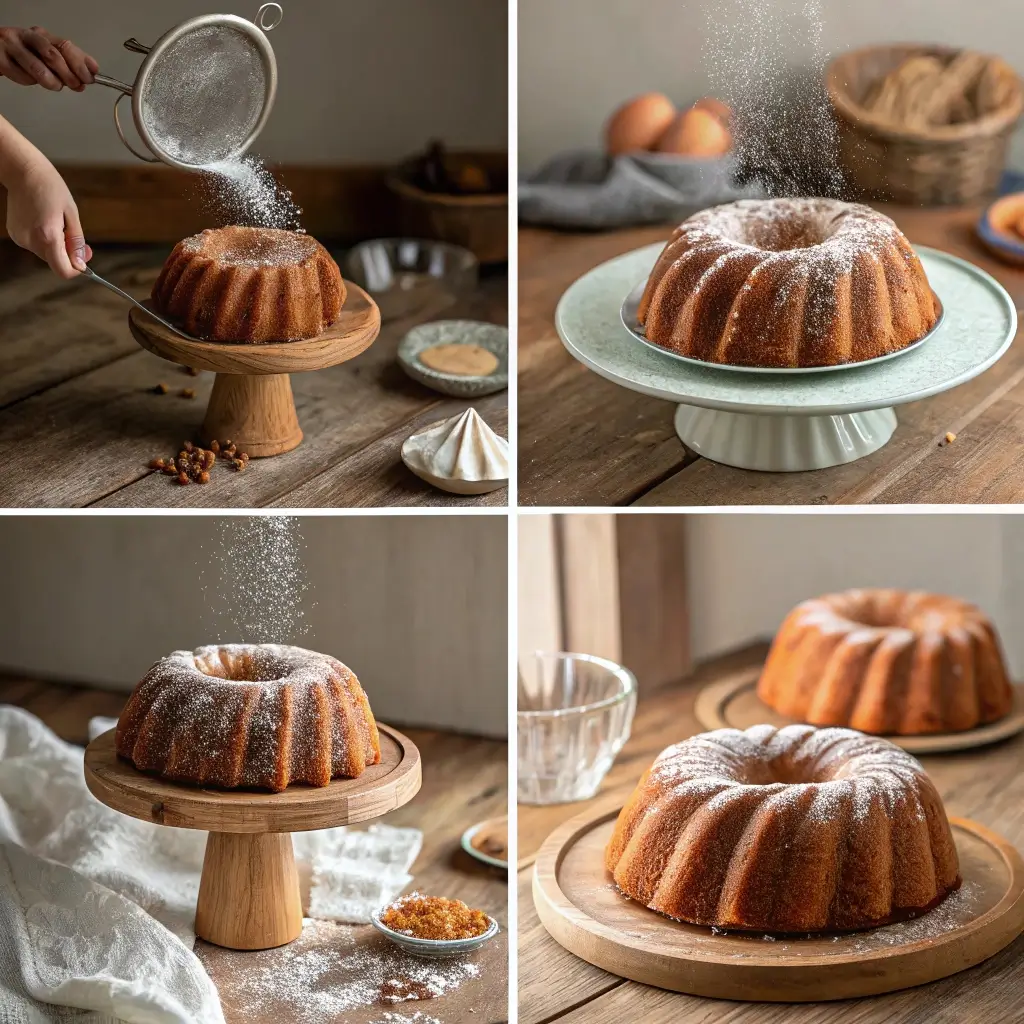
Storage and Make-Ahead Tips for Bundt Cake Recipes
Bundt cakes are actually perfect for making ahead because they stay moist and often taste even better the second day!
Room Temperature Storage
- Store unglazed or powdered sugar-topped cakes at room temperature
- Cover with a cake dome or inverted bowl
- Will stay fresh for 3-4 days
Refrigerator Storage
- Cakes with perishable glazes or fillings must be refrigerated
- Wrap tightly in plastic wrap to prevent drying out
- Let come to room temperature before serving
- Good for up to 1 week
Freezing Bundt Cakes
- Cool cake completely
- Wrap tightly in plastic wrap, then aluminum foil
- Freeze for up to 3 months
- Thaw overnight in the refrigerator
- Bring to room temperature before glazing and serving
Make-Ahead Options
- Bake and freeze unglazed bundt cakes up to 3 months ahead
- Mix dry ingredients up to 1 month ahead and store in an airtight container
- Create the glaze up to 3 days ahead and refrigerate
10 Delicious Bundt Cake Recipe Variations
Now that you know the techniques, here are some amazing bundt cake recipes to try:
1. Classic Lemon Bundt Cake
- Add 3 tablespoons lemon zest to the batter
- Replace some of the milk with fresh lemon juice
- Glaze with lemon juice and powdered sugar
2. Chocolate Lovers Bundt Cake
- Replace ½ cup flour with unsweetened cocoa powder
- Add 1 cup chocolate chips to the batter
- Drizzle with chocolate ganache
3. Spiced Apple Bundt Cake
- Fold in 2 cups diced apples
- Add 2 teaspoons cinnamon, ½ teaspoon nutmeg
- Top with caramel glaze
4. Marble Bundt Cake
- Divide batter in half
- Add cocoa powder to one half
- Drop alternating spoonfuls into the pan
- Swirl gently with a knife
5. Coconut Rum Bundt Cake
- Add 1 cup shredded coconut to batter
- Replace some liquid with coconut milk
- Add 2-3 tablespoons rum to both cake and glaze
6. Pumpkin Spice Bundt Cake
- Add 1 cup pumpkin puree
- Include pumpkin pie spice
- Top with cream cheese glaze
7. Berry Swirl Bundt Cake
- Fold 2 cups fresh or frozen berries into batter
- Swirl in 3 tablespoons berry jam before baking
- Dust with powdered sugar
8. Coffee Cake Bundt
- Create a cinnamon-sugar layer in the middle of the batter
- Add a streusel topping after turning out the cake
- Drizzle with simple vanilla glaze
9. Citrus Sunshine Bundt Cake
- Mix orange, lemon, and lime zest in the batter
- Use citrus juice in the glaze
- Decorate with candied citrus peel
10. Birthday Cake Bundt
- Add ½ cup rainbow sprinkles to vanilla batter
- Use clear vanilla extract for that classic birthday cake flavor
- Top with vanilla glaze and more sprinkles
Troubleshooting Common Bundt Cake Problems
Even with the best bundt cake recipes, problems can occur. Here’s how to fix them:
Cake Sticking to Pan
- Problem: Not enough pan preparation
- Solution: Be more thorough with greasing and flouring; consider a pan with a better non-stick surface
Cake Doming Too Much
- Problem: Oven too hot or too much leavening
- Solution: Reduce oven temperature by 25°F or reduce leavening agents slightly
Cake Sinking After Baking
- Problem: Underbaked or too much leavening
- Solution: Bake longer or reduce baking powder/soda slightly
Dense, Heavy Texture
- Problem: Overmixing or incorrect measuring
- Solution: Mix just until ingredients are combined; check your measuring technique
Dry Cake
- Problem: Overbaking or not enough fat
- Solution: Reduce baking time or add a bit more butter/oil/sour cream
Conclusion: Your Path to Perfect Bundt Cake Recipes
Bundt cakes are special – they combine simplicity with elegance in a way few other desserts can. With the techniques and bundt cake recipes I’ve shared today, you’re now equipped to create beautiful, delicious ring-shaped masterpieces that will wow your friends and family.
Remember that even professional bakers have bundt cakes stick sometimes! Don’t get discouraged if your first attempt isn’t perfect. Each bundt cake you make will teach you something new about your pan, your oven, and the magic of these special cakes.
I’d love to hear about your bundt cake adventures! What flavors will you try first? Do you have any special bundt cake recipes passed down in your family? The wonderful thing about bundt cakes is how they bring people together around the table – and isn’t that what baking is all about?
Happy baking, and may all your bundt cakes release perfectly!
Frequently Asked Questions About Bundt Cake Recipes
Can I use a regular cake recipe in a bundt pan?
Not all cake recipes work well in bundt pans. The best bundt cake recipes are slightly denser than regular cakes to hold the shape. If using a regular cake recipe, reduce the leavening slightly.
Why did my bundt cake fall apart when I turned it out?
This usually happens when the cake hasn’t cooled long enough. Always let your bundt cake cool for 10-15 minutes before attempting to remove it from the pan.
Can I make bundt cake recipes ahead of time?
Yes! Most bundt cakes actually taste better the day after baking. Store properly at room temperature or freeze for longer storage.
How do I know when my bundt cake is done baking?
Insert a wooden skewer into the thickest part of the cake. It should come out clean or with a few moist crumbs. The cake will also start to pull away from the sides of the pan.
Can I make bundt cakes gluten-free?
Absolutely! Use a 1:1 gluten-free baking flour blend in your bundt cake recipes. You may need to add an extra egg for structure.
How full should I fill my bundt pan?
Fill your bundt pan about ⅔ to ¾ full. Overfilling can cause the batter to overflow during baking.
Why does my bundt cake have a tough crust?
Your pan might be too dark, causing the outside to cook too quickly. Try reducing the oven temperature by 25°F or placing foil loosely over the cake during the last part of baking.
Can I use bundt cake recipes to make mini bundts?
Yes! Reduce the baking time to about 15-20 minutes for mini bundt cakes.
How can I add a filling to my bundt cake?
Layer it in! Pour half the batter into the pan, add your filling (avoiding the edges), then top with remaining batter.
Are bundt cakes healthier than regular cakes?
Not inherently, but the shape does allow you to slice smaller portions. You can make healthier bundt cake recipes by reducing sugar and substituting some butter with applesauce.
Tell us how u found this recipe?
There are no reviews yet. Be the first one to write one.

